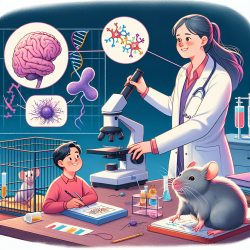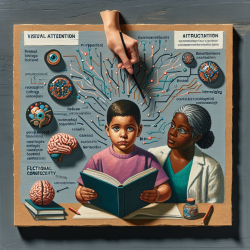The field of autism research is continuously evolving, with new discoveries offering fresh insights into this complex condition. A recent study titled Cell-type-specific neuroanatomy of cliques of autism-related genes in the mouse brain has shed light on the intricate relationship between gene expression and specific cell types in the cerebellum. This research is crucial for practitioners looking to enhance their understanding and improve interventions for individuals with Autism Spectrum Disorder (ASD).
The Study at a Glance
The study conducted by Grange, Menashe, and Hawrylycz focuses on two cliques of genes that are highly co-expressed in the cerebellar cortex of mice. These cliques are enriched with autism-related genes and show significant overexpression in specific cerebellar layers. The researchers used advanced computational methods to determine that these gene expressions are more closely related to granule cells and Purkinje cells than other cell types.
Key Findings
- Cerebellar Focus: The study highlights the cerebellum's role in autism, an area traditionally associated with motor skills but increasingly linked to cognitive functions.
- Granule and Purkinje Cells: These two cell types show a high similarity to the expression profiles of autism-related genes, suggesting their significant role in ASD.
- Cortical Connections: The research indicates potential connections between cortical pyramidal neurons and cerebellar cells, which could be pivotal in understanding ASD's neuroanatomical basis.
Implications for Practitioners
This research offers several practical implications for practitioners working with individuals with ASD:
- Enhanced Understanding: By recognizing the specific cell types involved in ASD, practitioners can better understand the neurological underpinnings of behaviors associated with autism.
- Therapeutic Targeting: The identification of granule and Purkinje cells as key players opens new avenues for targeted therapies that could modify gene expression patterns.
- Further Research Encouragement: Practitioners are encouraged to stay informed about ongoing research in computational neuroanatomy and its applications in clinical settings.
A Call to Action
This study is a reminder of the importance of integrating cutting-edge research into everyday practice. By staying informed and applying these insights, practitioners can contribute to more effective interventions and improved outcomes for individuals with ASD.
If you're interested in delving deeper into this fascinating research, you can access the full paper here: Cell-type-specific neuroanatomy of cliques of autism-related genes in the mouse brain.










